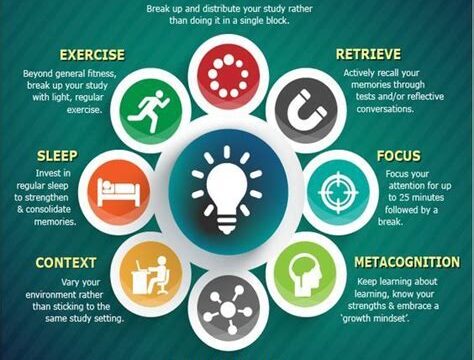Interactive Icebreaker Activities to Engage Participants
Icebreaker activities are a great way to break the ice and create a positive and inclusive learning environment. They are designed to engage participants, foster team building, and promote communication among individuals. Whether you are conducting a training session, workshop, or conference, incorporating interactive icebreaker activities can help create an atmosphere of enthusiasm and participation.
One fun icebreaker activity is “Two Truths and a Lie.” Each participant takes turns sharing three statements about themselves – two truths and one lie. The rest of the group then guesses which statement is the lie. This activity not only helps participants get to know each other better but also encourages active listening and observation skills.
Another interactive icebreaker activity is “Human Bingo.” Each participant receives a bingo card with different characteristics or experiences listed on it, such as “Has traveled to another country” or “Speaks multiple languages.” The participants then mingle and try to find someone who matches each characteristic. Once they find a match, they have the person sign their bingo card. The first person to fill their card with signatures wins.
- Benefits of Interactive Icebreaker Activities:
- Creates a positive and inclusive learning environment.
- Fosters team building and communication.
- Promotes active listening and observation skills.
- Encourages participants to get to know each other better.
| Activity | Description |
|---|---|
| Two Truths and a Lie | Participants share two truths and one lie about themselves. The group guesses which statement is the lie. |
| Human Bingo | Participants mingle and find someone who matches different characteristics listed on their bingo card. The first person to fill their card with signatures wins. |
By incorporating interactive icebreaker activities into your learning sessions, you can set the stage for a positive and engaging experience. These activities not only help participants get to know each other but also create a sense of excitement and enthusiasm. So, the next time you’re planning a training session or workshop, consider adding some interactive icebreaker activities to engage your participants right from the start.
Hands-On Group Projects for Collaborative Learning
Collaborative learning has become an increasingly popular approach in educational settings, as it allows students to actively engage with their peers, exchange ideas, and develop critical thinking skills. One effective way to promote collaborative learning is through hands-on group projects. These projects not only facilitate teamwork but also enhance problem-solving abilities, communication skills, and creativity among students.
One of the key advantages of hands-on group projects is that they provide students with a practical learning experience. Instead of passively absorbing information from textbooks or lectures, students actively participate in the learning process by working together to solve real-world problems. This allows them to apply theoretical knowledge to practical situations, develop a deeper understanding of the subject matter, and build their problem-solving skills.
Furthermore, hands-on group projects encourage communication and teamwork. By working collaboratively, students learn how to effectively communicate their ideas, listen to others’ perspectives, and compromise when necessary. This fosters a sense of camaraderie within the group and promotes a supportive learning environment where students feel comfortable sharing their thoughts and asking questions.
- Enhanced creativity: Hands-on group projects stimulate creativity as students brainstorm ideas, explore different possibilities, and think outside the box to find innovative solutions.
- Improved critical thinking: Collaborative learning requires students to analyze information, evaluate options, and make informed decisions, thus enhancing their critical thinking skills.
- Increased engagement: Active participation in hands-on projects keeps students engaged and motivated, as they have a sense of ownership over their learning and see its relevance to the real world.
| Project Example: | Learning Objectives: |
|---|---|
| Design a Sustainable City | – Understand the environmental impact of urban development- Apply principles of sustainability in city planning- Collaborate to develop innovative solutions |
| Create a Marketing Campaign | – Analyze target audience and market trends- Develop a comprehensive marketing strategy- Work together to implement and evaluate the campaign |
| Build a Rube Goldberg Machine | – Explore principles of physics and engineering- Apply problem-solving skills to design and construct the machine- Collaborate to troubleshoot and optimize its performance |
In conclusion, hands-on group projects are a valuable educational tool for promoting collaborative learning. They offer students the opportunity to actively engage with their peers, apply theoretical knowledge to practical situations, and develop important skills such as problem-solving, communication, and creativity. By incorporating these projects into the curriculum, educators can create dynamic and engaging learning experiences that foster a deeper understanding of the subject matter and prepare students for real-world challenges.
Simulations and Role-Playing Exercises to Foster Practical Skills
In today’s fast-paced and ever-changing world, it is crucial for individuals to possess practical skills that can be applied in real-life situations. One effective way to develop these skills is through simulations and role-playing exercises. These activities not only engage participants but also provide them with an opportunity to practice and apply their knowledge in a realistic setting.
Simulations allow participants to experience different scenarios and make decisions based on the given circumstances. For example, in a business simulation, participants can take on the role of a manager and make strategic decisions for their virtual company. This hands-on approach enables participants to gain a deeper understanding of the challenges they may face in the real world.
List
- Enhancing critical thinking: Simulations and role-playing exercises require participants to analyze situations, evaluate options, and make informed decisions. This helps develop their critical thinking skills.
- Promoting problem-solving abilities: By engaging in realistic scenarios, participants are challenged to solve complex problems. This fosters their problem-solving skills and encourages them to think creatively.
- Building communication and collaboration: Simulations often involve team collaboration, wherein participants must work together to achieve common goals. This promotes effective communication and collaboration skills.
- Developing adaptability and resilience: Through simulations, participants can learn to adapt to changing situations and overcome obstacles. This enhances their ability to be flexible and resilient in real-life scenarios.
- Providing a safe learning environment: Simulations and role-playing exercises offer a safe space for participants to practice new skills and experiment with different approaches. This allows for constructive feedback and continuous improvement.
Table
| Advantages of Simulations and Role-Playing Exercises | Disadvantages of Simulations and Role-Playing Exercises |
|---|---|
| Realistic learning experience | Time-consuming to design and implement |
| Opportunity for practical application | May require additional resources |
| Engagement and active participation | Comfort level varies among participants |
| Development of critical thinking skills | Can be challenging for introverted individuals |
| Promotion of collaboration and communication | Potential for role confusion |
Overall, incorporating simulations and role-playing exercises into learning experiences can be highly beneficial for participants. These activities provide a practical and interactive approach to foster essential skills, such as critical thinking, problem-solving, communication, and adaptability. By creating a safe learning environment, individuals can develop their capabilities and be better prepared to tackle real-life challenges.
Incorporating Technology for Innovative Learning Experiences
In today’s digital age, incorporating technology into the learning experience is becoming more crucial than ever. With the rapid advancement of technology, educators have a wealth of tools and resources at their fingertips to enhance the learning process and engage students in a whole new way. By leveraging technology, educators can create innovative learning experiences that not only captivate students’ attention but also cultivate their skills for the future.
One effective way to harness the power of technology in education is through the use of interactive online platforms and learning management systems. These platforms enable teachers to create and share digital resources, assignments, and assessments with their students. By leveraging multimedia elements such as videos, images, and interactive quizzes, educators can make the learning experience more engaging and interactive.
Another way to incorporate technology into the classroom is through the use of educational apps and software. From math and science simulations to language learning apps, there is a plethora of educational tools available to supplement traditional classroom instruction. These apps and software not only make the learning process more fun and interactive but also provide students with opportunities to practice and reinforce their skills in a personalized manner.
Furthermore, the integration of virtual reality (VR) and augmented reality (AR) into the learning experience opens up a whole new world of possibilities. VR allows students to explore virtual environments and engage in immersive learning experiences that would otherwise be impossible in a traditional classroom setting. AR, on the other hand, overlays digital content onto the real world, allowing students to interact with virtual objects and information in a hands-on and engaging way.
- Interactive online platforms and learning management systems
- Educational apps and software
- Virtual reality (VR) and augmented reality (AR)
| Technology | Advantages | Examples |
|---|---|---|
| Interactive online platforms and learning management systems | – Enhanced engagement- Personalized learning- Easy resource sharing | Google Classroom, Moodle, Edmodo |
| Educational apps and software | – Fun and interactive learning- Reinforcement of skills- Personalized learning | Khan Academy, Duolingo, Photomath |
| Virtual reality (VR) and augmented reality (AR) | – Immersive learning experiences- Hands-on and interactive- Real-world applications | Google Expeditions, Merge Cube, Anatomy 4D |
Creative Problem-Solving Challenges to Stimulate Critical Thinking
Creative problem-solving challenges are an effective way to stimulate critical thinking in individuals. These challenges require individuals to think outside the box and come up with innovative solutions to complex problems. By engaging in such challenges, participants are encouraged to explore new perspectives, think critically, and apply their knowledge and skills to find creative solutions. In this blog post, we will explore the importance of creative problem-solving challenges in stimulating critical thinking and provide some examples of these challenges.
Creative problem-solving challenges can be implemented in various settings, such as classrooms, professional development workshops, or team-building exercises. These challenges often involve presenting participants with a problem or scenario that requires them to think creatively and critically to find a solution. By introducing challenges that are open-ended and do not have one right answer, individuals are encouraged to think divergently and explore multiple possibilities.
Listed below are some examples of creative problem-solving challenges that can be used to stimulate critical thinking:
- Bridge Building: Participants are tasked with building a bridge using limited materials. This challenge requires them to think critically about the structure, design, and stability of their bridge.
- Riddle Solving: Participants are presented with riddles or puzzles that require them to think critically and creatively to find the solution.
- Escape Rooms: Participants are placed in a simulated escape room where they must solve puzzles, find clues, and think critically to escape within a given time frame.
These challenges not only stimulate critical thinking but also encourage collaboration and teamwork. Participants often need to work together, brainstorm ideas, and analyze different perspectives to find the best possible solution. By engaging in these challenges, individuals develop their problem-solving skills and learn to think critically in various situations.
Incorporating creative problem-solving challenges into learning experiences can have numerous benefits. It helps individuals develop higher-order thinking skills, promotes creativity and innovation, and enhances their ability to analyze and evaluate information. Furthermore, these challenges make learning more engaging and interactive, as individuals actively participate in problem-solving exercises rather than passively receiving information.
In conclusion, creative problem-solving challenges are an effective strategy for stimulating critical thinking. They provide individuals with opportunities to think creatively, analyze problems from different angles, and come up with innovative solutions. By incorporating these challenges into learning experiences, educators and trainers can foster a culture of critical thinking and equip individuals with essential skills for success in various domains.
Guest Speakers and Expert Panels for Industry Insights
Having guest speakers and expert panels can greatly enhance the learning experience for participants by providing them with valuable industry insights. These individuals bring their real-world expertise and knowledge into the classroom, giving participants the opportunity to learn from professionals who have hands-on experience in the field.
One of the key advantages of having guest speakers and expert panels is the fresh perspectives they bring. They can provide a different viewpoint on topics and share their own experiences, which can be eye-opening for participants. These insights can broaden their understanding and give them a more well-rounded perspective on the subject matter.
Furthermore, guest speakers and expert panels can offer practical advice and tips that participants can directly apply to their own careers or projects. This can be particularly beneficial for those looking to enter or advance in a specific industry. The speakers can share their success stories, challenges they faced, and valuable lessons they learned along the way.
Additionally, these sessions can serve as networking opportunities for participants. They can interact with industry professionals, ask questions, and make connections that can potentially open doors for future collaborations or job opportunities. This direct access to experts in the field can be incredibly valuable and can help participants build their professional network.
Incorporating guest speakers and expert panels into learning programs is a powerful way to bridge the gap between academic knowledge and real-world application. It provides participants with invaluable industry insights, practical advice, and networking opportunities. By exposing participants to professionals in their field, this approach fosters a deeper understanding of current industry trends and challenges, ultimately enriching their learning experience.
Engaging Gamification Strategies for Motivating Learning
Gamification has become a popular buzzword in the education industry, and for good reason. By incorporating game principles and mechanics into the learning process, educators are finding new and exciting ways to engage students and motivate them to learn. In this blog post, we will explore some of the most effective engaging gamification strategies that can be used to motivate learning.
1. Leaderboards: Creating a leaderboard can turn learning into a friendly competition. Students can earn points or badges for completing tasks or achieving milestones, and the leaderboard displays the top performers. This not only encourages students to actively participate in the learning process but also fosters a sense of achievement and healthy competition.
2. Reward Systems: Implementing a reward system can serve as a powerful motivator. By offering virtual rewards such as badges, levels, or in-game currency, students are incentivized to complete assignments and strive for excellence. These rewards can be used to unlock additional content or privileges, further motivating students to actively engage in their learning.
3. Quests and Missions: Transforming lessons into quests or missions adds an element of excitement to the learning experience. Students can embark on an interactive journey where they must complete various challenges or solve problems to progress. This not only makes learning more enjoyable but also encourages critical thinking and problem-solving skills.
| Strategy | Description |
|---|---|
| Leaderboards | Create a competitive environment by displaying the top performers. |
| Reward Systems | Motivate students by offering virtual rewards for their achievements. |
| Quests and Missions | Transform lessons into interactive journeys with challenges and problem-solving. |
These engaging gamification strategies have revolutionized the way we approach education. By tapping into students’ natural desire for competition, recognition, and adventure, educators can create a learning environment that is both fun and effective. So why not embrace the power of gamification and motivate learning in a whole new way?
Frequently Asked Questions
Question 1: How can interactive icebreaker activities engage participants?
Interactive icebreaker activities can engage participants by creating a positive and welcoming atmosphere, encouraging communication and teamwork, and setting the tone for the rest of the learning experience. These activities help break the ice and foster connections among participants, making them more comfortable and open to learning.
Question 2: What are the benefits of hands-on group projects for collaborative learning?
Hands-on group projects promote collaborative learning by allowing participants to work together to solve problems, exchange ideas, and share knowledge and skills. These projects encourage active participation, creativity, and critical thinking, while also fostering communication and teamwork skills.
Question 3: How do simulations and role-playing exercises foster practical skills?
Simulations and role-playing exercises provide participants with a realistic and interactive learning experience where they can practice and apply practical skills in a safe and controlled environment. These exercises help develop decision-making, problem-solving, and communication skills, while also enhancing empathy, teamwork, and adaptability.
Question 4: How can incorporating technology enhance learning experiences?
Incorporating technology in learning experiences can enhance engagement and interactivity by providing access to a wide range of resources, tools, and platforms. This allows for innovative and personalized learning experiences, such as virtual reality simulations, online collaboration tools, and interactive multimedia content.
Question 5: What are the benefits of creative problem-solving challenges for stimulating critical thinking?
Creative problem-solving challenges stimulate critical thinking by presenting participants with complex and open-ended problems that require them to think creatively, analyze information, evaluate options, and devise innovative solutions. These challenges encourage participants to think outside the box, develop problem-solving skills, and approach challenges from different perspectives.
Question 6: How can guest speakers and expert panels provide industry insights?
Guest speakers and expert panels can provide industry insights by sharing their knowledge, expertise, and real-world experiences with participants. They offer unique perspectives, practical examples, and up-to-date information about industry trends, challenges, and best practices, which can enhance participants’ understanding and application of the content.
Question 7: What are the benefits of engaging gamification strategies for motivating learning?
Engaging gamification strategies can motivate learning by adding elements of competition, rewards, and achievement to the learning experience. Gamification creates a sense of challenge, progress, and accomplishment, which increases participants’ motivation and engagement. It also promotes active participation, knowledge retention, and the development of skills through interactive and enjoyable activities.





